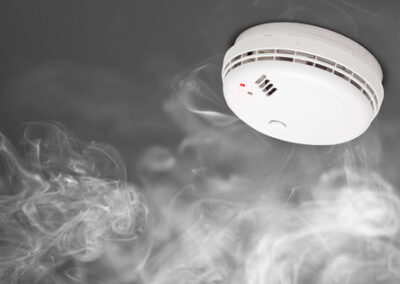The industry trends for the fire alarm industry has remained much the same as in the past several years. Use of wireless technology, voice-command systems, multi-criteria detectors, low-frequency (520Hz) sounders, co detectors, etc. has generally been increasing over the years due to technology advances and changing requirements in the states’ codes. Alarms systems are also becoming more Internet connected with some systems incorporating notifications by e-mail and text, web-based interfaces, and smart apps.
The June 29, 2016 article, New Communications Requirements for Fire Alarm Control Panels, discussed the phasing out of traditional analog phone lines and its impact on fire alarm panels. When switching away from traditional phones lines, many facilities have opted for a combination of an IP (or VoIP) and a cellular dialer to provide their system with redundant lines of communications. This trend is expected to continue for the next couple years as analog service is expected to be phased out by 2018.
One trend for sprinkler systems worth highlighting is the adoption of nitrogen-based systems. Sprinkler systems will corrode, eventually leading to system failure. This is true for both dry and wet sprinkler systems. Dry systems still contain moisture and, in fact, dry systems tend to corrode quicker. There are three elements required for corrosion to occur. These elements are water, iron, and oxygen. What nitrogen systems do is introduce nitrogen (N2) gas to displace the oxygen in the sprinkler system. Nitrogen is an inert gas that doesn’t promote corrosion like oxygen. Nitrogen generators or cylinders can be used to introduce the gas into the sprinkler system. The result of introducing nitrogen is an increase in the life expectancy of a system by four or five times.
Ryan Fireprotection keeps up to date with the current technology in the fire prevention industry to provide its clients the best the industry has to offer. If a building’s fire alarm system was installed many years ago it may not be ready for the new communications requirements mentioned above. In these cases, the system should be evaluated to determine if a panel upgrade is needed. Newer panels can also reduce maintenance and testing expenses and can reduce costly false alarms.

